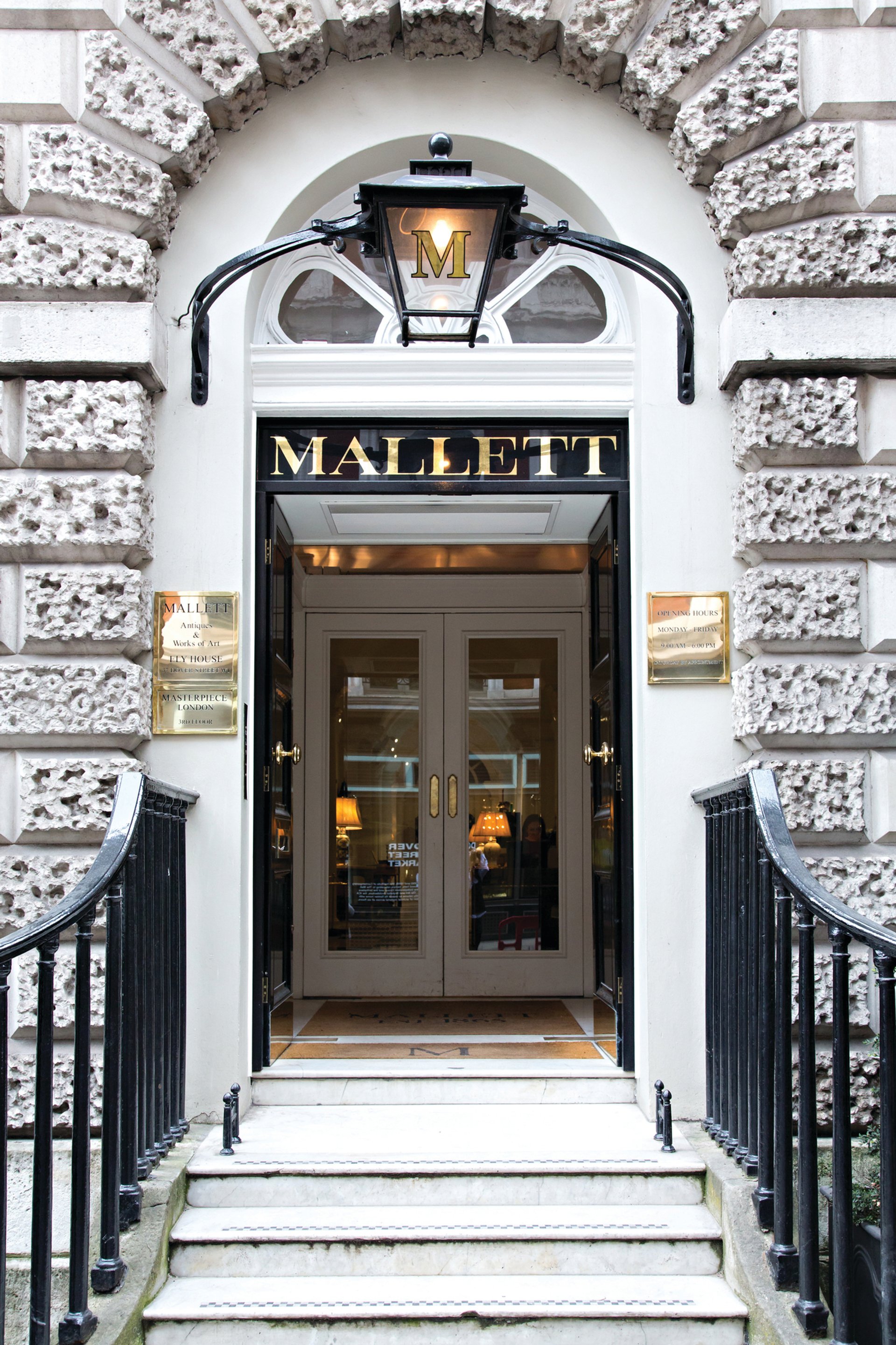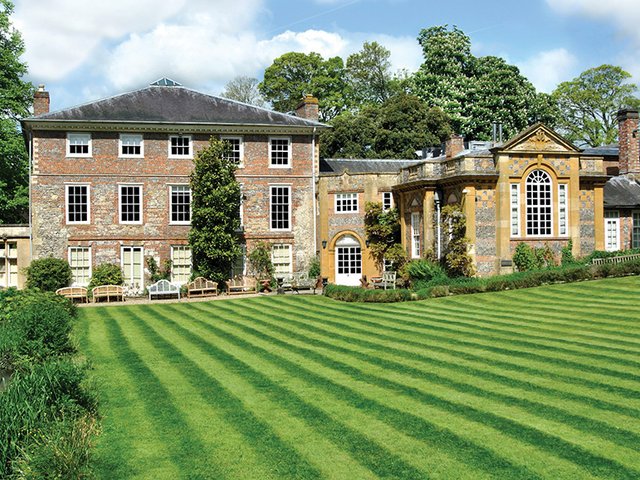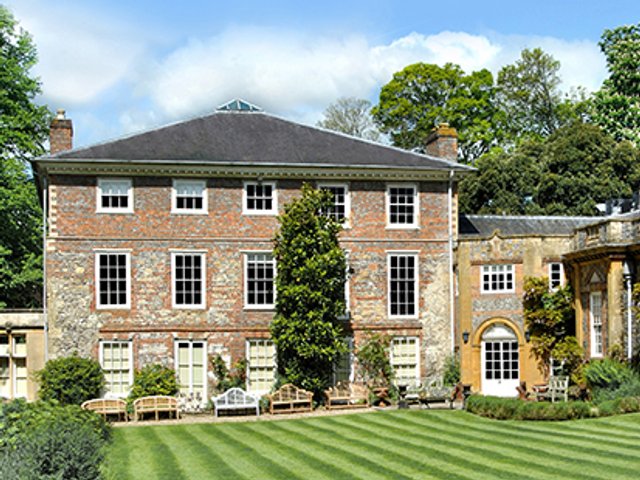Mallett, founded in 1865 and one of the last antiques “department stores” amid the fashion retailers in the West End of London, is preparing to move from its palatial Mayfair showroom to more modest premises as part of a shift in strategy after a troubled few years. The (unconfirmed) rumour that the contemporary mega-dealer Thaddaeus Ropac has his eye on the London building seems to encapsulate how the fortunes currently favour the new.

On 23 March, the dealership held a stock dispersal auction in preparation for the sale of the four-storey Ely House on Dover Street, along with its New York space on Madison Avenue. The auction was run by Mallett’s sister company, Dreweatts & Bloomsbury, also owned by the Stanley Gibbons group, which bought Mallett in 2014, to the surprise of many. The parent company has debts of more than £20m and, a week after the Mallett auction, raised the £13m needed to restructure this debt through an emergency share placing. The restructuring should be bolstered by the planned sales of the London and New York leaseholds, the former marketed by Levy Real Estate for at least £2.3m, according to the London Evening Standard, and the latter believed to be under negotiation with the fashion designer Stella McCartney.
George Bailey, the chairman of Mallett, who is a Sotheby’s veteran and the owner of the Auction Room online platform, will run the London operation along with the picture specialist James Harvey.
While there have been issues that are unique to Mallett, its difficulties are part of a wider trend in which traditional antiques dealers have been squeezed in a contracting market, rendering large, prestige emporiums in prime London, New York and Paris locations financially untenable.
Several long-established dealerships, for various reasons, have either closed or scaled back their operations in the past two decades, on both sides of the Atlantic. Those that have closed for good include Jeremy, Hotspur, Turpin’s, Stair & Company, and Norman Adams.
New directions
Others have changed direction. In October 2014, Sotheby’s New York held a $6.7m sale of English furniture and decorative art from the stock of the New York firm Kentshire, founded in 1940, as it ended its trade in antiques to focus on jewellery. In March, the London and Paris-based Pelham Galleries, opened more than 80 years ago, sold £3.4m of furniture and art at Sotheby’s, London following the decision of its director, Alan Rubin, to focus on antique musical instruments and transfer its administrative headquarters to the Paris gallery.
One of the few antiques dealers left with a large shop in Mayfair is Ronald Phillips on Bruton Street. Simon Phillips, the director, says they “certainly hope to remain” in the face of rising rents and competition from fashion houses.
“It’s true that plenty of big names have closed in the past 15 to 20 years,” Phillips says. “But I don’t think there’s one overarching trend, or [that this] signals the death of the industry.”
He sees Mallett as “healthy competition”, but thinks that the firm “should have stuck to dealing in 18th-century furniture rather than trying to branch out, and also never should have become a public company”.
Bailey didn’t want to comment specifically on Mallett’s previous strategy, but says the dealership will “continue to operate from a London office”, although the location is as yet unconfirmed. It “will continue to trade in a very similar fashion” and “will attend international and London fairs”. These include Masterpiece (30 June-6 July), in which Stanley Gibbons is a stakeholder through Mallett, a founding partner of the fair.
The Kensington dealer Ian Butchoff says that he has experienced a boom in the past six months. He thinks the closing of some galleries in London’s West End is in part a natural process: “Most [dealers] had reached near-retirement age and didn’t want to saddle themselves with a new lease with open-ended rent reviews, or were offered huge sums for their existing leases.”
However, he adds: “Long gone are the sales of contents of grand country houses that were once a seemingly unending supply of rare and fresh-to-market pieces.”
Mallett: A timeline 1865 Founded at 36 Milsom Street in Bath by John Mallett.
1908 His son, Walter Mallett, opens a permanent showroom in London. By 1937, the business has moved entirely to London from Bath.
1961 Mallett opens a second showroom at Bourdon House in Mayfair.
1987 Mallett floats on the London Stock Exchange to become a public limited company, owned by its shareholders.
1991 Moves to larger premises at 141 New Bond Street (until 2012).
2003 Opens a showroom on Madison Avenue, New York.
2011 Announces a profit before tax (£500,000) for the first time in four years, for the year ending 31 December 2011, boosted by the £1.3m sale of the lease on 141 New Bond Street (Bourdon House was sold in 2007).
February 2012 Moves to Ely House on Dover Street, Mayfair.
September 2014 The stamp and coin specialist Stanley Gibbons buys Mallett in a deal reportedly worth nearly £10m.
2015 Henry Neville, director of Mallett’s New York gallery, leaves the firm amid alleged involvement in an embezzlement case. A spokesman for Stanley Gibbons says the firm is cooperating with the authorities. Neville could not be reached for comment.
July 2015 Mallett holds a 375-lot, £1m stock clearance sale.
September 2015 Stanley Gibbons directors Stephan Ludwig (The Fine Art Auction Group/TFAAG) and Ian Goldbart (Noble Investments) leave the parent company. George Bailey takes over as chairman of Mallett.
October 2015 Thomas Woodham-Smith, formerly director at the firm until 2010, returns to join James Harvey as joint chief executives of TFAAG.
December 2015 Woodham-Smith and Giles Hutchinson Smith (Mallett chief executive and managing director) leave the company.
February 2016 Mallett announces sale of the leaseholds for its New York space, on 929 Madison Avenue, and London flagship, Ely House. Auditors for Stanley Gibbons resign, saying firm is exposed to “excessive risk”.
23 March 2016 Ely House: Fine Furniture and Decorative Arts sale of 167 pieces of Mallett’s inventory totals £585,960 (£726,590 with premium).
End of March 2016 Stanley Gibbons raises £13m through an emergency share placing to help restructure the group’s debts of more than £20m. New shares are offered at 10p each and the placing attracts a take-up rate of more than double. At the start of 2015, these were trading at around £3.00.



